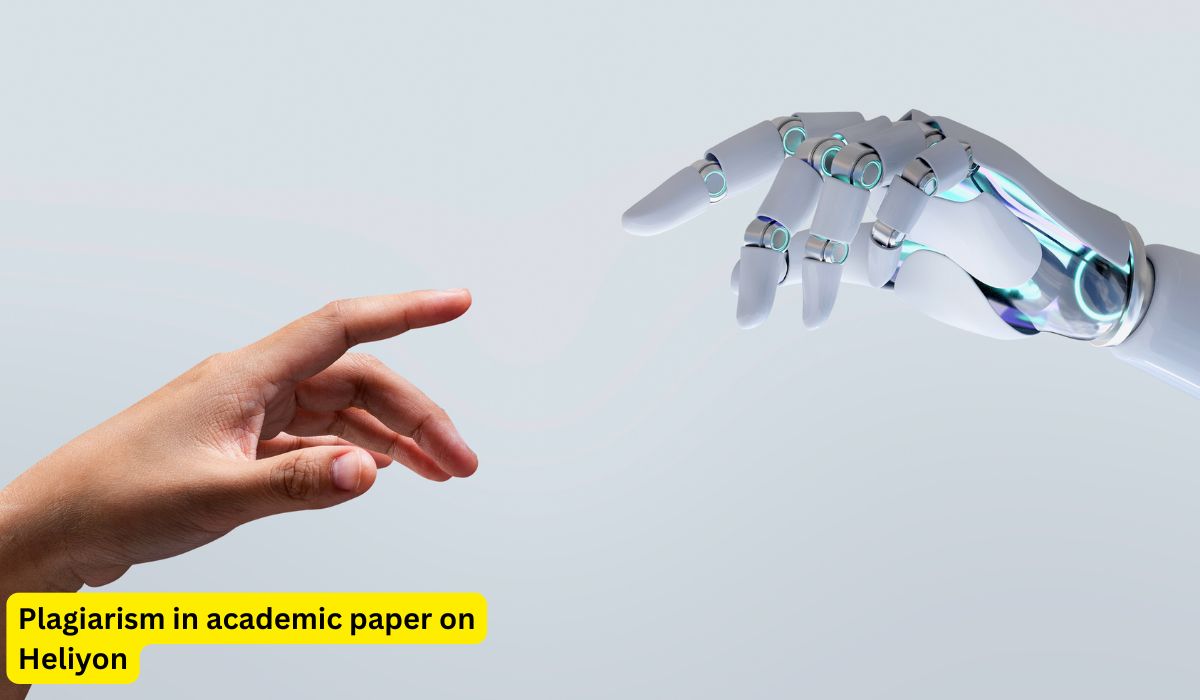Academic publishing is built on trust, originality, and the accurate acknowledgment of others’ work. Any breach of these principles can seriously harm both an author’s career and a journal’s reputation. One of the most common and damaging breaches is plagiarism. For researchers aiming to publish in Heliyon—a respected open-access, multidisciplinary journal—understanding plagiarism is not optional, it’s essential.
What Does “Plagiarism in Academic Paper on Heliyon” Mean?
Plagiarism in an academic paper on Heliyon refers to the inclusion of ideas, words, images, data, or findings from other sources without proper attribution. This can occur in various forms:
- Direct plagiarism – Copying text word-for-word without quotation marks or references.
- Paraphrasing plagiarism – Rewriting someone else’s ideas in different words but without credit.
- Self-plagiarism – Reusing significant portions of your previously published work without disclosure.
- Data or figure plagiarism – Using another researcher’s graphs, tables, or datasets without permission or citation.
Even if done unintentionally, plagiarism is still a violation of ethical publishing standards and can have severe consequences.
Why Heliyon Takes Plagiarism Seriously
Heliyon is committed to maintaining a high standard of research integrity. Plagiarism undermines the trust between authors, editors, and readers. If unchecked, it can distort the academic record and weaken the credibility of scientific literature.
By enforcing strict plagiarism policies, Heliyon ensures that:
- Readers receive original and authentic research.
- Authors are credited fairly for their contributions.
- The scientific community maintains integrity and trust.

How Plagiarism is Detected in Heliyon Submissions
When a manuscript is submitted to Heliyon, it undergoes an initial similarity check before peer review. This involves scanning the paper against a large database of published research, conference papers, books, and online sources.
A similarity report highlights overlapping content and its sources. Editors then review these overlaps to determine whether they are acceptable (such as standard methodology phrases) or problematic (unattributed copying).
If plagiarism is confirmed, the journal takes action based on severity:
- Minor overlaps – Manuscript returned to author with revision requests.
- Major overlaps – Immediate rejection before peer review.
- Post-publication plagiarism – Article retraction and possible notification to the author’s institution.
Consequences of Plagiarism for Authors
Plagiarism in an academic paper on Heliyon can have lasting consequences:
- Rejection of manuscript – Often before peer review.
- Loss of reputation – Damaging credibility among peers and within institutions.
- Retractions – Public removal of published articles, often accompanied by a formal notice.
- Career setbacks – Difficulty publishing in other reputable journals.
- Institutional penalties – Disciplinary action from universities or funding bodies.
For early-career researchers, one incident can have a lasting impact on future opportunities.
Common Reasons Plagiarism Happens
While some plagiarism is intentional, many cases result from poor research practices:
- Lack of understanding of proper citation rules.
- Poor paraphrasing skills leading to unintentional copying.
- Time pressure pushing authors to take shortcuts.
- Misconception about self-plagiarism and reusing old work.
Regardless of intent, Heliyon evaluates plagiarism based on content overlap, not motivation, so prevention is the only safe approach.
How to Avoid Plagiarism in Your Heliyon Submission
Preventing plagiarism requires careful planning and awareness. Here are key steps:
- Keep accurate source records – Note every reference, idea, or data point you use while researching.
- Cite everything you borrow – Whether it’s a direct quote, paraphrased section, or data, always include proper citation.
- Paraphrase effectively – Fully understand the original material before rewriting it in your own words. Avoid simply swapping synonyms.
- Use plagiarism check tools – Run your paper through a plagiarism checker before submission to identify unintentional overlaps.
- Be transparent about reused work – If your current paper builds on past research, clearly disclose this and cite your earlier work.
- Understand Heliyon’s author guidelines – Review its policies on ethics and citation before you start writing.
The Role of Ethical Writing in Academic Success
Ethical writing is about more than avoiding punishment—it’s about contributing honestly to the body of knowledge. By producing original work and giving credit where it’s due, authors strengthen their own credibility and help maintain trust in scholarly publishing.
For Heliyon, every published paper reflects the integrity of both the author and the journal. Ensuring your work is plagiarism-free not only helps it pass editorial screening but also positions you as a reliable contributor to your field.
Final Thoughts
Plagiarism in an academic paper on Heliyon is a serious ethical violation with long-term consequences. Whether it’s direct copying, poor paraphrasing, or self-plagiarism, such breaches undermine the integrity of academic publishing.
By following best practices in citation, paraphrasing, and transparency, authors can ensure their submissions to Heliyon meet the highest ethical standards. In doing so, they not only protect their professional reputation but also uphold the trust and credibility that make scholarly communication valuable.
Originality is the foundation of impactful research. When authors commit to integrity, Heliyon continues to publish work that truly advances knowledge—and that benefits the entire academic community.
